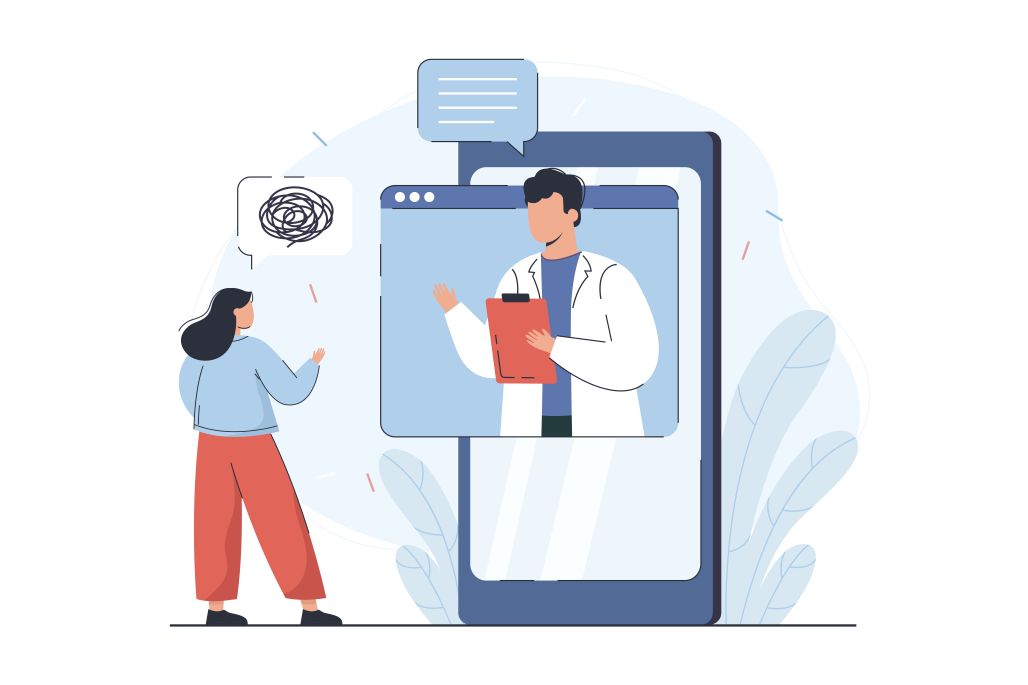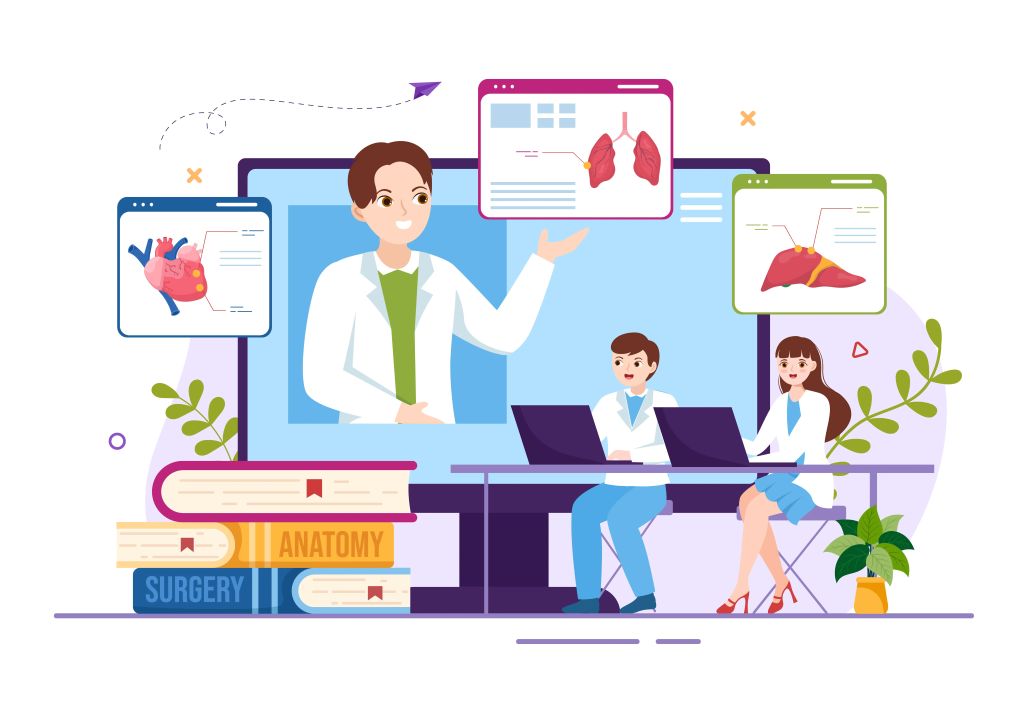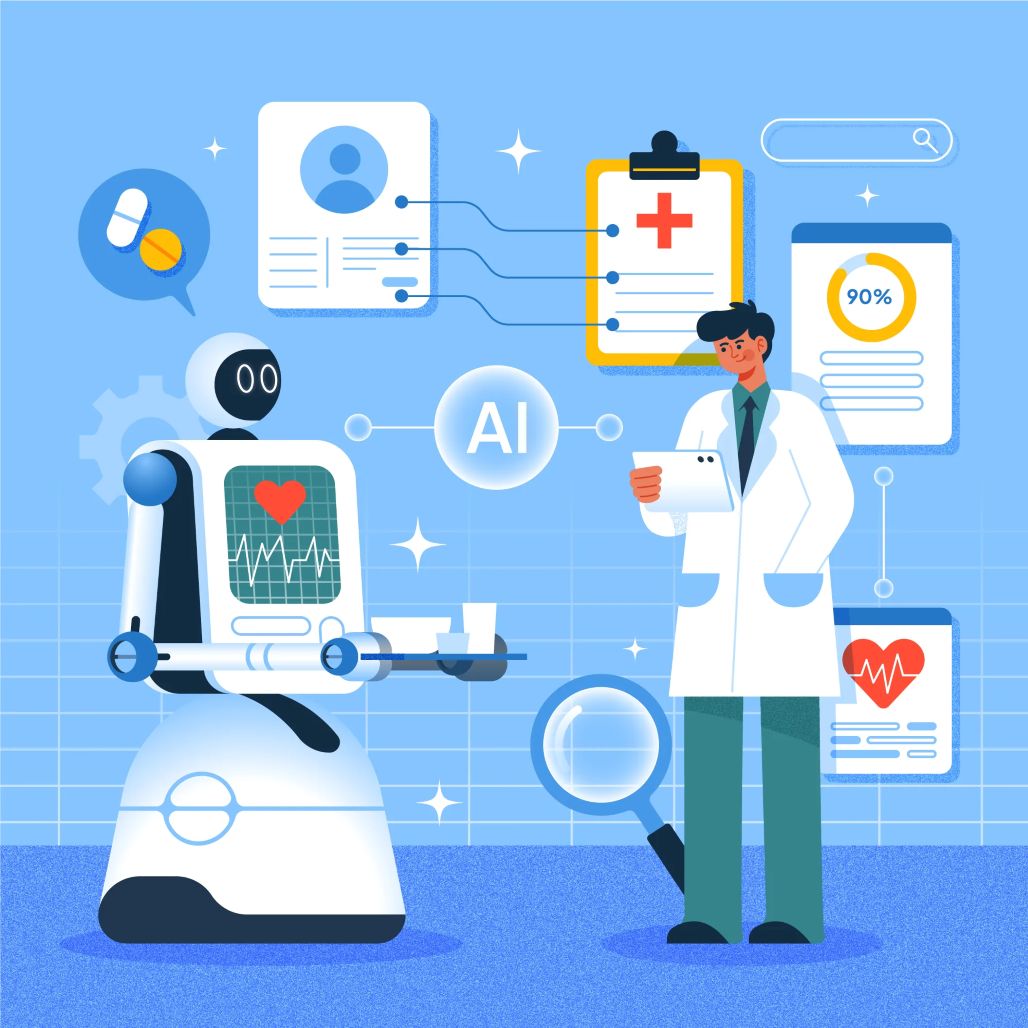Virtual care, once a niche offering, is now a central pillar of health service delivery. In fact, online healthcare has become an essential part of modern patient care. As telehealth services expand, so do expectations of quality, safety, accessibility, and efficiency. A robust Healthcare Learning Management System (LMS) is the foundation that equips staff—from nurse practitioners to administrators—to deliver exceptional virtual care. Platforms like Calibr Learn, with AI-powered personalization and real-time analytics, help healthcare organizations ensure their teams are prepared for the growing demands of digital care.
To learn more, explore our website or contact us today to get started

What Is Telehealth & Why It’s More Than Just Remote Visits
Understanding what is telehealth is essential before designing effective telehealth training programs. Many ask, how does telehealth work? At its core, it connects patients and providers through secure digital channels.Telehealth refers to the use of telecommunications and information technologies to provide a broad spectrum of health-related services remotely. It includes clinical services (diagnosis, treatment), but also non-clinical interactions like provider education, administrative communication, public health messaging, patient monitoring, and behavioural health.[ CDC]
Telemedicine is a subset of telehealth—primarily the remote delivery of clinical care (e.g. diagnosis, treatment) via audio/video technologies.[ ModMed]
Understanding this distinction is critical in designing training programs. Staff need to know not just how to conduct a virtual consultation, but also how other telehealth components (remote monitoring, asynchronous communication, patient education) fit together.
Why Telehealth Training Programs Are Essential
Below are several compelling reasons and data points showing why training in telehealth is now non-negotiable:
Broad adoption & regulatory changes: Most hospitals and clinics now offer telehealth as routine. In the U.S., over 86 % of hospitals reported offering telehealth services as of 2022. [American Hospital Association ]
Effectiveness: A recent randomized clinical trial found telehealth in palliative care was as effective as in-person care for improving quality of life among cancer patients. [Yale School of Medicine ]
Better access & convenience: Telehealth helps reach patients in rural or underserved areas, reduces travel time, enables faster appointments.
Cost savings & scalability: Both for patients (travel, missed work) and for healthcare systems (facility overheads, staffing).
Without effective training for providers, much of the potential of telehealth remains unrealized. Errors, patient dissatisfaction, privacy risks—and missed opportunities—arise when staff aren’t fully prepared.
Understanding this distinction is critical in designing training programs in telehealth. Staff need to know not just how to conduct a virtual consultation, but also how other telehealth components—remote monitoring, asynchronous communication, patient education—fit together. With platforms like Calibr’s Content Hub, organizations can centralize learning materials and resources to cover the full scope of telehealth services, ensuring teams are trained on both clinical and non-clinical aspects of virtual care.
Key Components of Telehealth Training for Nurse Practitioners & Clinical Staff
A training program focused on telehealth must cover several areas:
Technical skills and platform navigation
How to set up video calls, remote monitoring devices, asynchronous tools
Troubleshooting audio/video, connection issues
Using telehealth platforms’ features (chat, screen share, file transfer)
Mastering technology in healthcare is the foundation for delivering safe and effective telehealth
Clinical best practices in virtual care
Adapting physical exam or assessment remotely
Recognizing limitations of virtual interaction
Patient safety, privacy, ethical considerations
Communication skills
Building rapport over video or phone
Ensuring clarity, especially where non-verbal cues are limited
Cultural competence, language, accessibility
Legal, regulatory & compliance issues
Licensure, cross-state / cross-jurisdiction issues
Reimbursement / billing rules for telehealth
Data security, HIPAA or equivalent privacy regulations
Workflow & operational integration
Scheduling, documentation, record keeping
Coordination with in-person services (hybrid care)
Using telehealth sensibly: when virtual care is appropriate vs when face-to-face is needed
Patient support and digital literacy
Helping patients use telehealth technology (apps, portals, remote monitoring)
Addressing barriers: internet access, device access, comfort with technology
These components should form part of comprehensive telehealth training programs.
How a Healthcare LMS Powers Effective Telehealth Training

A modern LMS designed for healthcare, like Calibr, plays a critical role in scaling and maintaining quality in telehealth training. Here’s how its features map to the needs of telehealth training and support staff readiness:
AI-Powered Course Authoring – Quickly create interactive, role-based telehealth modules that reflect the latest clinical guidelines.
Personalized Learning Paths – Deliver tailored training for nurse practitioners, physicians, and administrative staff based on their roles and skill levels.
Mobile Learning & Offline Access – Enable staff to train anytime, anywhere, even in low-connectivity settings.
Microlearning Modules – Break down complex telehealth procedures into bite-sized lessons for better understanding and retention.
Collaborative Learning – Encourage peer discussions, case-based learning, and virtual simulations to strengthen communication and decision-making.
Gamification – Use challenges, points, and badges to boost staff engagement in regulatory or compliance training.
Real-Time Analytics – Track training completion, identify knowledge gaps, and measure impact on patient satisfaction and outcomes.
Assessment & Certification – Validate staff competence before they provide telehealth services, ensuring compliance and quality standards.
Multi-Language Support – Train diverse teams and ensure inclusivity for global healthcare organizations.
Platforms like Calibr align well with these requirements:
Calibr Learn supports personalized learning paths, mobile access, assessments & certification.
Calibr Craft helps create robust content (scenario-based modules, procedural simulations).
Calibr Content Hub ensures centralized resources, updated content libraries for all staff.
Integrating these ensures telehealth training programs are consistent, up-to-date, and scalable.
What Telehealth Platforms & Solutions Staff Should Be Trained On
Healthcare organizations must carefully choose platforms for telehealth that ensure secure, efficient, and user-friendly experiences. Training should include:
Telehealth platform(s) for video/audio consults (secure, compliant)
Remote patient monitoring tools and wearables
Asynchronous communication tools (e.g. messaging portals, email, apps)
Electronic health record (EHR) integrations
Data analytics / dashboards to monitor outcomes
Security tools (e.g. encryption, device security, authentication)
In 2025, many healthcare organizations are adopting hybrid telehealth solutions that combine synchronous and asynchronous services. Training should cover how to use these blend-platforms efficiently.
Telemedicine Training for Nurse Practitioners: Special Considerations
Nurse practitioners (NPs) often serve as frontline providers in virtual settings. Specific training focus for them might include:
Triage and decision-making: knowing when to escalate to in-person care
Performing remote assessments via patient-reported measures, video inspection, and remote monitoring data
Chronic disease management via telehealth (e.g., diabetes, hypertension)
Communication skills for behavioral/mental health care via virtual mediums
Managing virtual emergencies when physical findings are limited
Telehealth training programs, especially those delivered through a capable LMS like Calibr Learn, that include simulations, case studies, and role-play are particularly helpful for NPs to gain hands-on experience.
Benefits of Telehealth When Staff Are Well-Trained
The benefits of telehealth are fully realized only when supported by proper training. When staff are properly trained via comprehensive telehealth training programs and supported by a modern LMS such as Calibr, benefits include:
Higher patient satisfaction due to more professional, seamless virtual visits
Reduced errors and better adherence to privacy and regulatory standards
Greater efficiency: reduced no-shows, better scheduling, fewer redundant appointments
Expanded access: reaching rural, remote, or patients with mobility constraints
Staff satisfaction: confidence in offering virtual care, less technology frustration
Challenges & How Training + LMS Helps Overcome Them
Challenges include:
Technology/connectivity issues (for both staff & patients)
Digital literacy gaps among patients
Regulatory, licensure, reimbursement complexities
Privacy & data security concerns
Resistance to change, or preference for in-person care
A well-designed LMS with telehealth training programs, like Calibr, helps by:
Providing simulations & troubleshooting modules to build technical confidence
Offering modules for patient-facing staff to coach patients in using remote tools
Delivering up-to-date training around policies, privacy, and regulatory landscape
Running ongoing refreshers & assessments to keep staff current
Where Telehealth Training Is Headed: Trends by 2025 & Beyond

AI and machine learning in both training and delivery—such as recommending training based on skill gaps or assessing image/video quality in teledermatology—are transforming care. Technology in healthcare will increasingly drive these innovations, shaping both training and delivery models.
More use of remote patient monitoring (RPM) as standard of care, especially for chronic diseases. Training will include interpreting sensor data, integrating RPM into care plans.
Hybrid care models – blending in-person and virtual; staff will need to dynamically switch between modes. This shift proves online healthcare is not a passing trend but a permanent part of healthcare delivery. By 2025, platforms for telehealth will likely integrate AI, remote monitoring, and hybrid models seamlessly.
Greater emphasis on equity & accessibility – training in multiple languages; designing for low bandwidth; helping underserved populations; closing the digital divide.
Standardization of telehealth competencies – formal credentialing, certification of providers in telehealth-specific skills.
How Calibr’s Suite Supports the Future of Telehealth Training
To effectively execute and prepare staff for virtual care, organizations can leverage Calibr’s tools:
Calibr Learn provides adaptive learning paths, mobile-friendly and offline content, assessments & certification, and real-time analytics. Great for onboarding, continuous education, and validating skills.
Calibr Craft allows rapid development of high-quality, interactive content—useful for scenario-based training (for example, patient triage in virtual settings, remote monitoring interpretation).
Calibr Content Hub serves as centralized repository of up-to-date policies, guidelines, best practices, case studies, and reference materials about telehealth platforms, technology use etc.
Using these tools, a healthcare organization can build, deliver, monitor, and continuously refine telehealth training programs, ensuring that staff are confident, capable, and compliant.
Conclusion
Telehealth is no longer the future—it’s the present. Training programs that clearly explain how does telehealth work in practice give staff the confidence to deliver quality virtual care. For organizations still asking what is telehealth, the answer lies in combining clinical expertise with digital tools supported by healthcare LMS platforms. Its success, however, depends on the people delivering it. That’s why telehealth training programs for nurse practitioners and clinical staff must be well-designed, continuously updated, and supported by a strong Healthcare LMS.
With platforms like Calibr , organizations can build personalized learning paths, engaging content, reliable assessments, and accessible training. This ensures teams are not only prepared for today’s telehealth demands but are also future-ready for 2025 and beyond. In fact, telehealth 2025 will be defined by hybrid care models, AI-driven tools, and highly trained staff supported by LMS platforms
If you’re looking to strengthen your telehealth workforce, start by identifying skill gaps, reviewing the platforms you rely on, and exploring how an LMS can simplify both training and continuous improvement.
With Calibr, you can turn these goals into reality.By investing in structured LMS-powered programs, healthcare organizations maximize the benefits of telehealth for both patients and providers. Explore our solutions or Contact us today to see how we can help your teams lead the way in telehealth. Adopting modern telehealth solutions ensures training translates into measurable patient outcomes.


